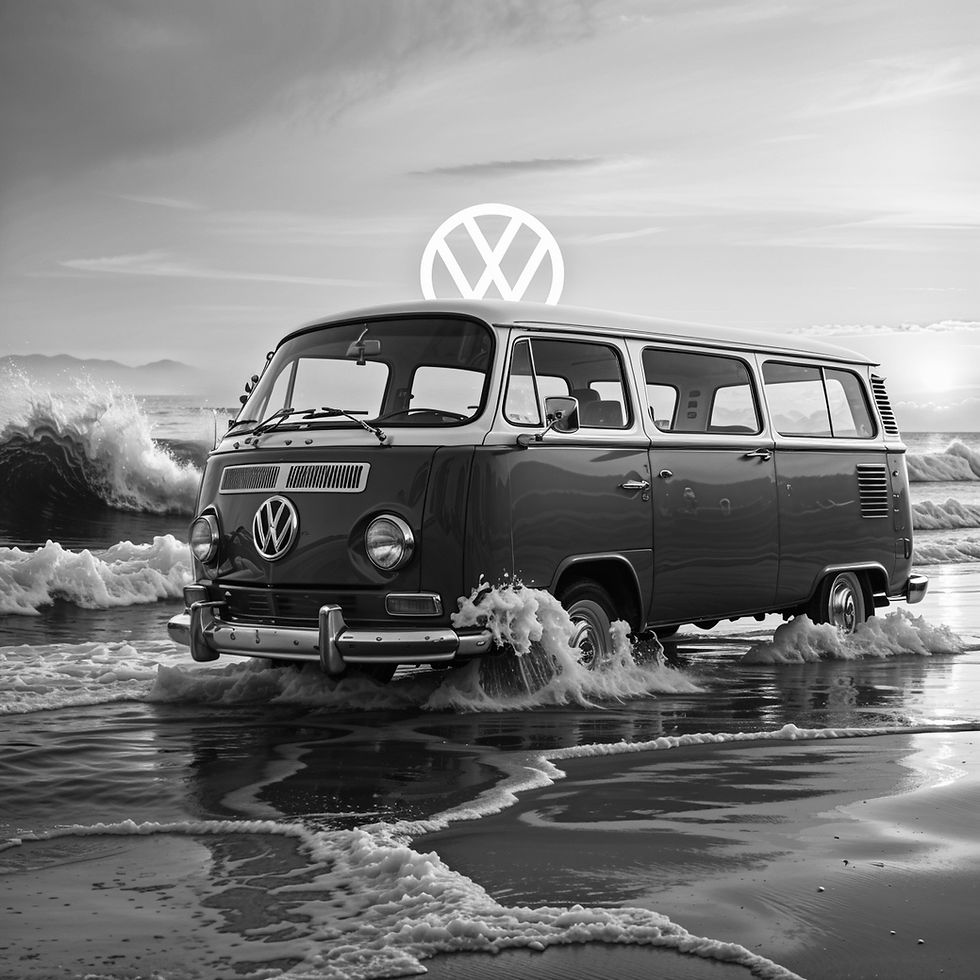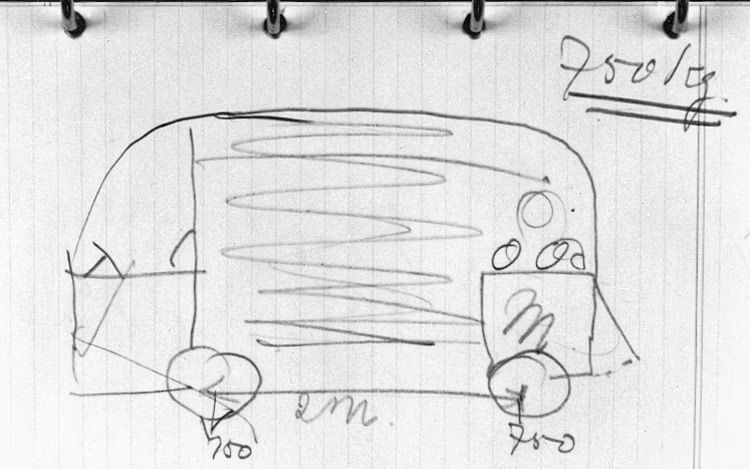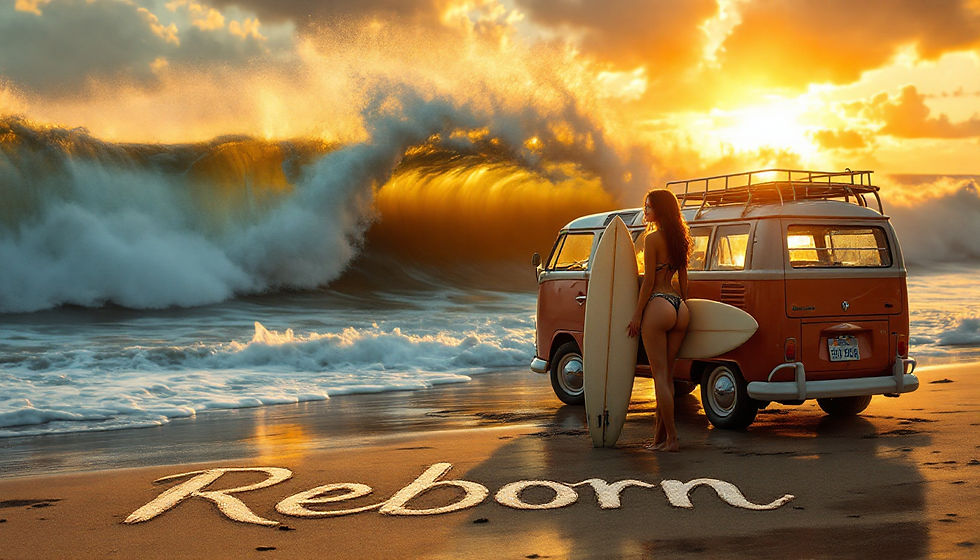Uncovering the Surprising Stories Behind the Volkswagen Transporter's 70 Years of Usefulness
- Terry Weisenfeld
- Apr 1
- 6 min read
Updated: May 31
The Volkswagen Transporter, often referred to as the "VW Bus," has been a reliable companion for adventurers, surf enthusiasts, and families for more than 70 years. This versatile vehicle has evolved to meet society's changing needs, securing a unique position in automotive history. From serving as a workhorse, to becoming an icon of the "counterculture," its remarkable journey from a concept on notebook paper to today's modern electric version is truly exceptional.


A Trip Down Memory Lane: The Birth of the VW Bus
The Volkswagen Transporter made its debut in the aftermath of World War II. In the 1940s, Europe faced significant transport challenges. The first model, the T1, launched in 1950, quickly became a symbol of freedom. With nearly 1.8 million units sold, the T1 transformed transportation. Later models combined for a total of 13 MILLION units built worldwide over 70 years, all makes and models. Germany and Brazil built the largest number of buses until 2013 when last Transporter was built in Brazil.
The T1 featured an iconic rounded shape and a split windshield, which appealed to many. The two-tone paint options added a personal touch. and were "deluxe". The spacious interior could be configured for various purposes, making it ideal for families or businesses needing to transport goods. THe Transporter was eventually marketed as a family stationwagon and as a "micro-bus".

\
From Surfers to Festivals: A Cultural Icon
During the 1960s, the VW Bus evolved beyond its initial function to become a symbol of cultural significance. It was adopted by surfers and the counterculture, helping to define a new way of life. The link between the Transporter and events such as Woodstock underscored its significance in the countercultural movement of the time. At Woodstock, numerous VW Buses were present, representing freedom and creativity. and solidified the identity of the bus. These vehicles offered rolling festival accommodations that were easy to maintain and light enough to push and start with the pop of the clutch.

By the end of the '60s, approximately 1 million VW Buses were in circulation in the United States, establishing a community that still thrives today. The Transporter's connection with music, art, and festivals solidified its status in popular culture, making it instantly recognizable to many.
The Versatility of the Transporter: Beyond Just a Vehicle
One of the Volkswagen Transporter's standout features is its impressive versatility. Originally designed as a commercial vehicle, it quickly found various applications. Today, it serves not only as a reliable delivery van but also as a camper for weekend outings and even an emergency response vehicle with fire fighting applications and well as an ambulance.. From country to country, transporters are utilized in whatever way the owners find suitable to serve their needs. Beer dispensensing bars on wheels, flower sales, coffee servers, fruit vendors, photo booths, nostalgic cocktail vendors, trash haulers, pet salons, surf school surfboard rentals, bike club haulers, musician's touring and equipment vehicles... (that's the short list.)

For instance, small businesses use the Transporter as mobile workshops, and food entrepreneurs have converted it into food trucks. In 2021, the food truck industry was valued at $1 billion in the U.S. alone, highlighting the Transporter's role in this expanding market. Its versatility has made it popular across numerous industries. Distinctive and intriguingly appealing, its iconic profile captures attention. and draws people to it regardless of the bus's purpose.

Keeping Up with the Times: The EVolution of Design
The Transporter has evolved through several redesigns to stay relevant. Each model, from the T2's sharper design to the T6's sleek lines, adapts to modern needs while retaining its core charm. "The jury is still out" on the ID BUZZ EV. Love it or hate it, its roots reflect the design evolution of the Transporter and the changes with evolving technology in the auto industry.
New models come equipped with features such as improved fuel efficiency and state-of-the-art safety technology. For instance, the ID BUZZ EV includes advanced driver-assistance systems designed to reduce accident risks. On the other hand, older models have a devoted fan base, with collectors eager to maintain their classic charm, even if it means sacrificing modern safety and conveniences. The "traditional" mindset among genuine VW enthusiasts will preserve its original identity for the foreseeable future as the new generation of VW owners cretae new, "electric" stories of their own.
The Global Community: A Transporter Family
The Volkswagen Transporter has cultivated an enthusiastic global community. Clubs and gatherings celebrate their shared love for this iconic vehicle, bringing together people from diverse backgrounds. There are vintage shows and swap meets where owners connect and share stories. Drag strips are racing insanely "souped-up" buses, even a jet-powered transporter that is theoretically capable of 300 MPH, but tested to "only" 157 MPH.
(What's the record for the number of chassis revolutions of a VW transporter flipping over at a quarter-mile dragstrip traveling at 157 MPH...? Time will tell.....)
.(The Oklahoma Willy is a notable example of a jet-powered Volkswagen Transporter. This 1958 Volkswagen Type II pickup was extensively modified by Perry Watkins in the United Kingdom, integrating a 1986 Rolls-Royce Viper 535 turbojet engine alongside its original flat-four engine. The Viper jet engine produces approximately 3,450 pounds of thrust... the flat four...not so much...

Events like the "Bulli Festival" in Germany exemplify this community spirit. In 2019, the festival attracted over 15,000 visitors, showcasing the love and respect for these vehicles.
"Busfest" in Great Britain hails as the largest bus festival in the world.
"Bug-a-Paluza" in Tennessee.."The Pomona Swap Meet", the "OCTO SHOW" Long Beach, and "Bugorama" in California are great meets for Vw's and other classic cars.The warmth within this community ensures the Volkswagen Transporter's legacy continues, not just as a vehicle, but as a symbol of adventure.

Sustainability and the Future: The Next Chapter
As we advance into the 21st century, sustainability is becoming increasingly important. Volkswagen has recognized the need for greener alternatives and is developing electric versions of the Transporter. The aim is to ensure that the beloved vehicle remains a viable option while being environmentally conscious.
By focusing on sustainable practices, Volkswagen honors the Transporter's rich history while charting a path for its future. The Volkswagen Transporter has long been an iconic vehicle, synonymous with versatility and reliability, serving various roles from family transport to commercial use. In recognizing this legacy, Volkswagen is not only paying homage to the past but also making a conscious effort to adapt to the evolving demands of modern society. For instance, their commitment to electrification is a significant step forward, as it could lead to a remarkable reduction of carbon emissions by up to 80%.
***(Never mind that the cost and pollution involved in harvesting minerals to make EV batteries may outweigh the benefits.)***just food for thought...
Moreover, the transition to electric power not only aims to reduce the ecological footprint of the Transporter but also enhances its appeal to a new generation of consumers who prioritize sustainability in their purchasing decisions. This approach is essential for attracting both long-time fans—who have cherished the Transporter's legacy—and environmentally conscious customers who are increasingly looking for vehicles that align with their values. By integrating advanced technologies like electric drivetrains,
Volkswagen is positioning the Transporter as a forward-thinking option that meets the needs of both commercial and personal users, ensuring that it remains relevant in an ever-changing market.

The Enduring Legacy of the Volkswagen Transporter
The Volkswagen Transporter's rich 70-year history is filled with adventure, community, and transformation. Its iconic design and cultural significance have made it a symbol of freedom and adaptability for generations.
Whether you see the Transporter as a road trip partner, a festival symbol, or an essential asset in numerous industries, one thing is certain: it occupies a special spot in many hearts across the globe. As the Transporter evolves, it will spark a desire to explore and foster relationships, becoming far more than just a means of transportation.
In the automotive world, few vehicles can claim such a vibrant story, and the VW Bus remains prepared for both new adventures and cherished memories.
What's a VW transporter worth? Depends.....
Auction records:
*Barrett Jackson) Scottsdale 2014...$302,500 (cha ching!)
(1965 21 Window Deluxe VW featured on "BITCHIN RIDES.
( It doesnt have to be " Concourse" to be expensive)

*VW Beetle: $212,500 (cha ching)






Comments